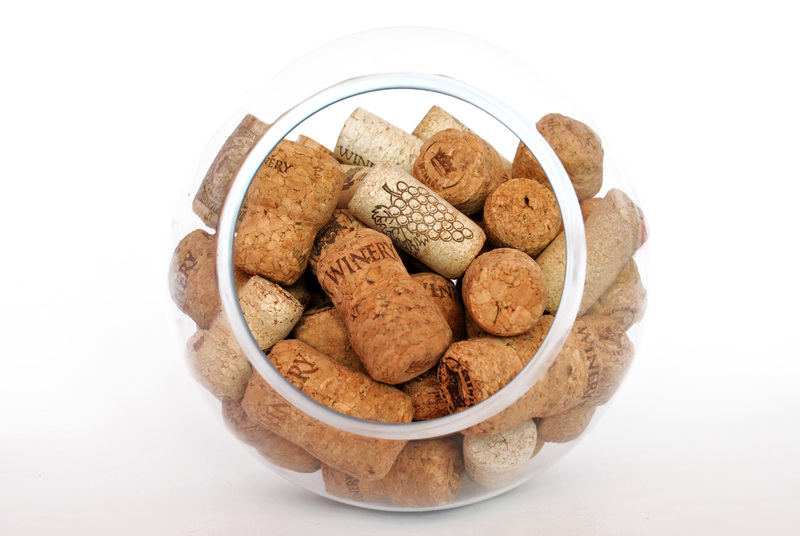Tips for Disposing of Cookware Without Harming the Environment
Disposing of old or damaged cookware can be a surprising challenge for eco-conscious individuals. Many pots, pans, and kitchen tools are made from durable materials that don't break down easily and may contain coatings or components that harm the environment. Whether you're updating your kitchen gear or parting ways with a much-loved pan, consider these tips for sustainably disposing of cookware and minimizing your environmental impact.
Why Proper Cookware Disposal Matters
Millions of tons of household waste end up in landfills annually, much of which comprises metal, plastic, and composite materials found in common kitchenware. When non-biodegradable cookware is improperly disposed of, the consequences can be long-lasting:
- Leaching chemicals: Nonstick coatings and metals can leach toxins into soil and water.
- Resource waste: Failing to recycle means valuable metals aren't recovered and reused.
- Greenhouse emissions: Manufacturing new products is more energy-intensive than recycling existing materials.
Making an effort to minimize your environmental footprint by responsibly discarding cookware not only benefits the planet but can also inspire your community to adopt more sustainable practices.

Know Your Cookware Materials
Understanding what your disposed items are made of is the first step to environmentally friendly cookware disposal. Here are the most common materials:
- Stainless Steel: Highly recyclable and durable.
- Cast Iron: Heavy, exceptionally durable, and recyclable.
- Aluminum: Lightweight; must be separated from non-metal attachments.
- Copper: Valuable, but rarely accepted with coatings.
- Nonstick (Teflon/ceramic): Coatings complicate recycling; may contain chemicals.
- Glass and Ceramic: Recyclable in some facilities, but often require special handling.
Always check for materials like silicone handles, wooden parts, or plastic lids, as they may need to be separated for correct disposal.
Best Ways to Dispose of Old Cookware Responsibly
1. Donate If Still Usable
One of the most sustainable options is to extend the life of your cookware through donation. Many items, even if slightly scratched or worn, can serve someone in need.
- Local charities, shelters, and goodwill organizations often accept gently used cookware.
- Community kitchens, food banks, or homeless shelters also appreciate donations.
- You can list items for free or at low cost on platforms like Freecycle, Craigslist, or Facebook Marketplace.
Note: Only donate cookware that is safe for use (no broken handles, peeling coatings, or severe damage).
2. Upcycle or Re-purpose
If your pans or pots are no longer fit for cooking, consider creative upcycling ideas:
- Planters: Drill drainage holes in pots or pans and use them as quirky plant containers.
- Organizers: Use deep pans or old colanders to store utensils, art supplies, or garden tools.
- Decor: Cast iron skillets can be turned into wall art or rustic clocks; enamel pots add a vintage touch to home decor.
Upcycling is an innovative and fun way to prevent waste while adding character to your home or garden!
3. Recycle Scrap Metal Cookware
Metal cookware such as stainless steel and cast iron is almost always recyclable. Here's how you can do it:
- Remove non-metal parts (plastic, wood, rubber, or silicone handles).
- Rinse off food residue for easier recycling.
- Drop off at local scrap metal yards or recycling centers; some accept household cookware, while others may require separation of different metals.
Contact your local recycling center to ask about their specific requirements. Some municipalities host special metal recycling days for household items.
4. Handle Nonstick and Coated Cookware Carefully
Nonstick cookware usually has a PTFE (Teflon) or ceramic-based coating. These complicated materials are rarely accepted for standard recycling due to potential toxins.
- Check with the manufacturer; some have take-back or recycling programs for their branded items.
- Look for specialized recycling programs in your area, particularly those handling e-waste or hazardous materials--they may accept coated cookware.
- If recycling isn't an option, try repurposing as plant pots or organizers as described above.
Important: Do not incinerate nonstick cookware, as this releases toxic fumes into the environment.
5. Participate in Retail Take-Back Programs
Many major retailers now offer trade-in or recycling initiatives for kitchenware and small appliances:
- Sur La Table, Williams Sonoma, and Bed Bath & Beyond periodically host recycling events for cookware.
- Check with hardware or department stores in your area for similar programs.
- Some direct-to-consumer brands accept old products in exchange for a discount on new ones.
Retail take-back programs are a convenient option that ensures proper sorting and recycling of cookware materials.
Cookware Recycling: What Items Are Acceptable?
Recycling kitchen waste sustainably is easier when you know what is accepted. Here's a quick guide:
- Accepted: Bare stainless steel, cast iron, copper, aluminum pans without coatings or attachments.
- Not Accepted: Teflon-coated or enamelware, items with excessive plastic, glass, or ceramic-inserts.
- Maybe: Some glass and ceramics; ask your local facility if they have a tile or ceramic recycling division.
Always check with your local recycling guidelines to avoid "wishcycling"--putting non-recyclables in your bin in hopes they'll get recycled.
Sustainable Alternatives for Cookware Disposal
- Host a cookware swap: Organize an event with friends or community groups to exchange unwanted pots and pans.
- Offer to repair: Many metal items--cast iron in particular--can be reconditioned or re-seasoned for renewed use. Consider gifting your cookware to a tinkerer or cast iron enthusiast.
- Upcycling for crafts: Old lids make great paint palettes; cookie sheets turn into magnetic boards for children.
What to Avoid When Disposing of Cookware
Not all cookware can be recycled or donated, and improper disposal can be damaging. Follow these key don'ts to avoid harming the environment:
- Never burn or incinerate nonstick or plastic-coated items.
- Don't throw metal pans in regular trash--this fills landfills with non-degradable waste.
- Don't put ceramics or glassware in with standard glass recycling unless instructed by your facility.
- Don't mix cookware types in your recycling bin, as this can contaminate recyclable materials.
Frequently Asked Questions About Eco-Friendly Cookware Disposal
Can I put old pots and pans in the curbside recycling bin?
Usually not. Most curbside programs do not accept cookware because it can damage sorting equipment or contain non-recyclable coatings. Drop off at a scrap metal facility or special recycling event instead.
Is Teflon or ceramic-coated cookware recyclable?
Typically, these items are not accepted in regular recycling due to the coating material. Check with the manufacturer or specialized recycling providers.
What should I do if my cookware contains mixed materials?
Separate non-metal parts if possible. Handles, knobs, and lids made of wood, plastic, or silicone should be removed to ensure the core metal can be recycled properly.
Are there green brands that offer eco-disposal options?
Yes. A growing number of cookware companies are introducing sustainable disposal programs--look for take-back or recycling partnerships when shopping for new kitchen items.

Benefits of Sustainable Cookware Disposal
By taking the time to properly dispose of old kitchen items, you can significantly reduce environmental harm and promote a culture of sustainability. Benefits include:
- Conservation of resources: Metals and materials can be recovered for future manufacturing.
- Reduced landfill waste: Less trash means less pollution and lower greenhouse gas emissions.
- Cost savings: Reusing and recycling reduces purchasing needs and disposal costs for municipalities.
Proper cookware disposal is a simple but powerful way to help the planet and set an example for your family and neighbors.
Conclusion: Make Your Cookware Disposal Eco-Friendly
Switching out cookware doesn't have to harm the planet. With a little research and effort, your old pans and pots can be recycled, reused, upcycled, or donated instead of ending up in a landfill. From participating in retailer programs to creative upcycling in the home or garden, your choices make a meaningful impact.
Let's all play a part in building a greener future by making conscious, educated choices about kitchen and cookware disposal. Together, we can reduce waste and ensure our kitchens--past and present--contribute to a healthier planet.
Eco-Disposal Checklist for Cookware:
- Inspect for donation potential
- Consider upcycling ideas
- Remove non-metal attachments
- Contact local recycling centers for metal item rules
- Seek retailer or manufacturer take-back options
- Never burn or landfill hazardous materials
Use these tips for disposing of cookware without harming the environment to keep your kitchen and the earth clean for generations to come!